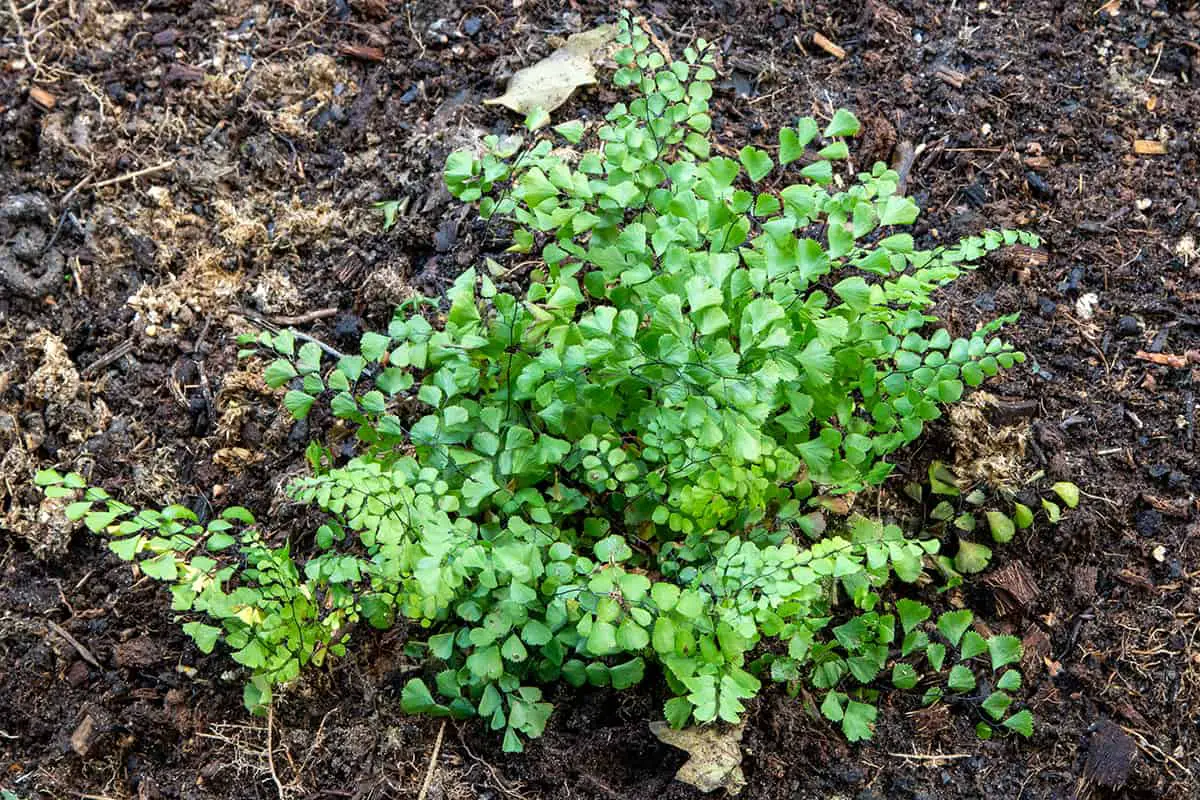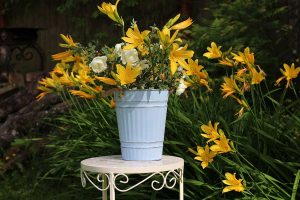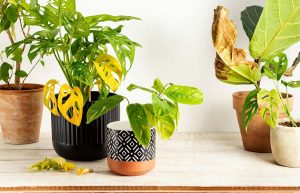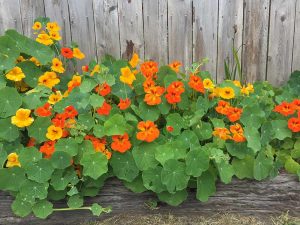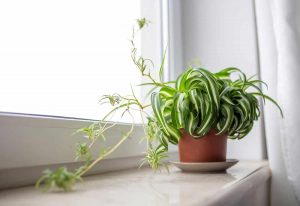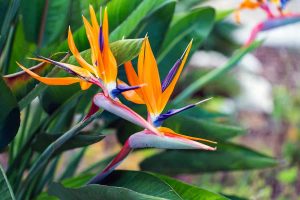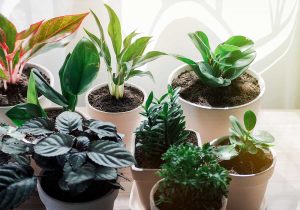Ferns are an enormously popular garden plant for brightening up dark corners of the garden since they thrive in shady and moist conditions. Ferns are one of the oldest types of plants in the world, and there are estimated to be over 12,000 different types currently growing around the globe.
If you’re looking for a fern suitable for growing in Zone 6, then ferns that are native to your region will work best since they are accustomed to the local climate and the conditions of the soil. This includes the Maidenhair Fern (Adiantum aleuticum), the Ostrich Fern (Matteuccia struthiopteris), and the Giant Wood Fern (Dryopteris goldieana).
Here we look at the types of conditions found in Zone 6 and which ferns will perform best in this zone.
Table of Contents
What is USDA Zone 6?
USDA hardiness zones are mapped out according to the highest and lowest expected temperatures in regions across the United States and Canada. This is a means of helping people determine which types of plants are going to be suitable for growing in their climate. The zones start at 1a and go up to 13b.
The lower a zone is, the colder its lowest temperatures are. The higher-numbered zones indicate regions that have milder low temperatures and hotter high temperatures. As zone 6 falls roughly in the middle of zones 1 to 13, this is an indicator that it has a mid-range temperature level, getting neither exceptionally cold nor exceptionally hot.
The regions which zone 6 covers include some of the eastern United States, from Massachusetts to Delaware. It also covers some of the more central states, including Kansas and Ohia. There are regions of the western US that are also covered by zone 6, including parts of Nevada, Utah, and Arizona.
Conditions for Plants in Zone 6
In USDA hardiness zone 6, minimum winter temperatures can be expected to range from -10°F to 0°F. The last frost in zone 6 usually happens around late February to early March, so the planting period can ordinarily begin in the middle of March and last right through to November when temperatures begin to drop again.
Zone 6 is a mild and temperate growing zone, which means that there’s a huge range of plants that will thrive in these temperatures.
Best Ferns for Zone 6
The best ferns for growing in zone 6 are those which prefer mid-range temperatures. Ferns in zone 6 should be hardy enough to withstand frost, unless they are deciduous, in which case they will die out before the first frost arrives anyway.
Maidenhair Fern
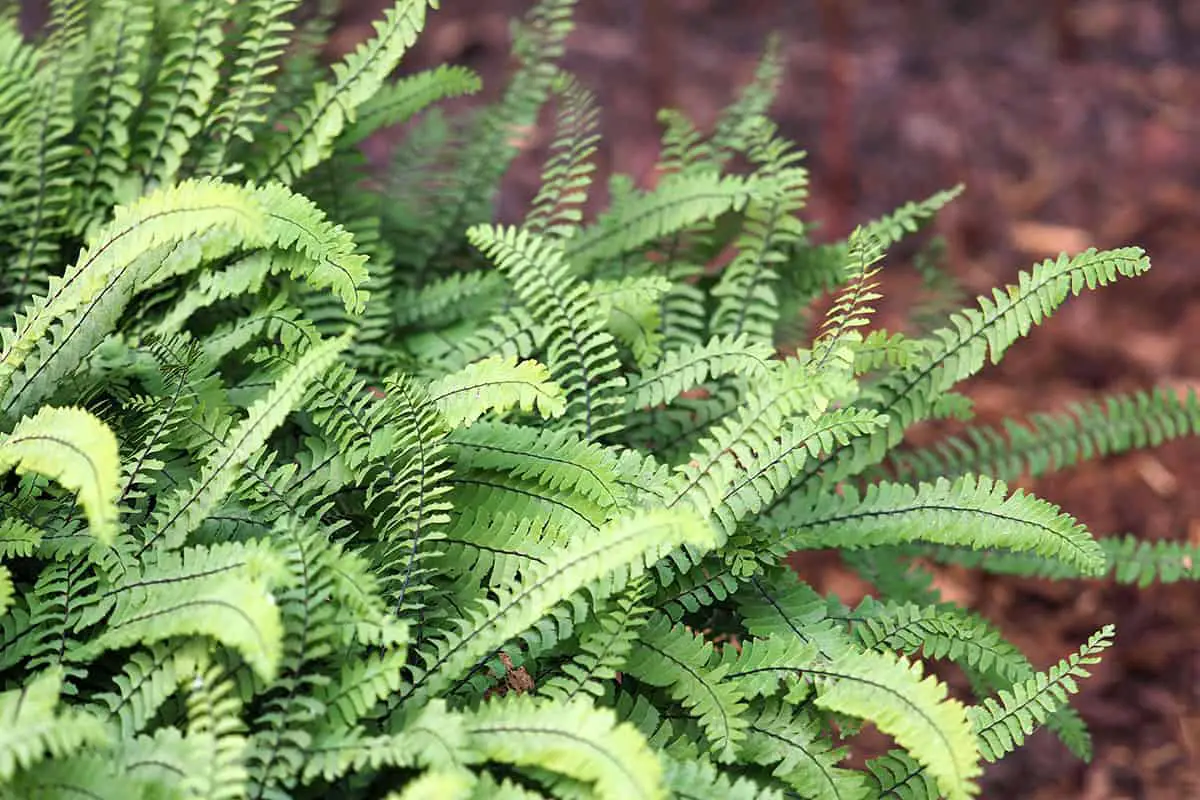
- Botanical name: Adiantum aleuticum
- Common names: Maidenhair Fern, Five-Fingered Fern, Western Maidenhair
- Plant family: Pteridaceae
- USDA hardiness zone: 3 – 8
- Mature height: 3 feet
- Mature spread: 3 feet
The Maidenhair Fern is native to North America, growing from the Pacific Northwest through to the Southeast and Southwestern United States. It is a delicate-looking plant, though it is actually quite hardy.
The lacy fronds of this fern are bright green, with a wiry black stem running down the spine of each one. Like most ferns, the Maidenhair Fern provides shaded sites and soil that is kept damp.
The plant cannot tolerate waterlogged soils, so a well-draining mixture will be best. This plant thrives in USDA hardiness zones 3 through to 8, making it a perfect choice for zone 6 gardens.
Himalayan Maidenhair
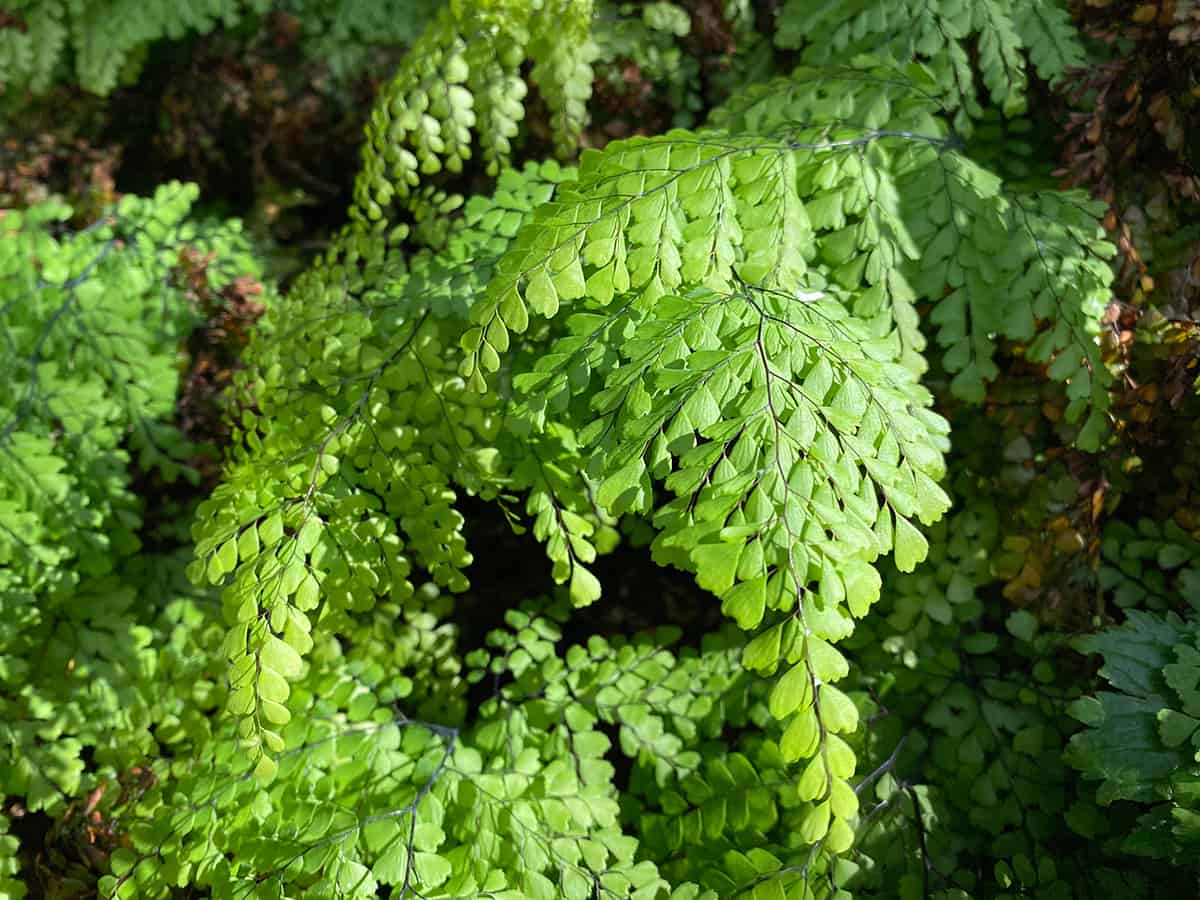
- Botanical name: Adiantum venustrum
- Common names: Himalayan Fern, Evergreen Maidenhair
- Plant family: Pteridaceae
- USDA hardiness zone: 5 – 9
- Mature height: 8 inches
- Mature spread: 3 feet
This plant is a deciduous fern that can remain evergreen in milder climates. It will be deciduous when temperatures go lower than 14°F, and as zone 6 can get down to -10°F, the Himalayan Maidenhair will likely be semi-evergreen.
This plant is exceptionally attractive, with fronds made up of small triangle leaves. New fronds emerge in a blush salmon color and develop into a bright, fresh green. Himalayan Maidenhair ferns prefer partial to full shade, and soils which are moist but well draining. They should be kept out of direct sun since this can burn their leaves.
Northern Maidenhair Fern
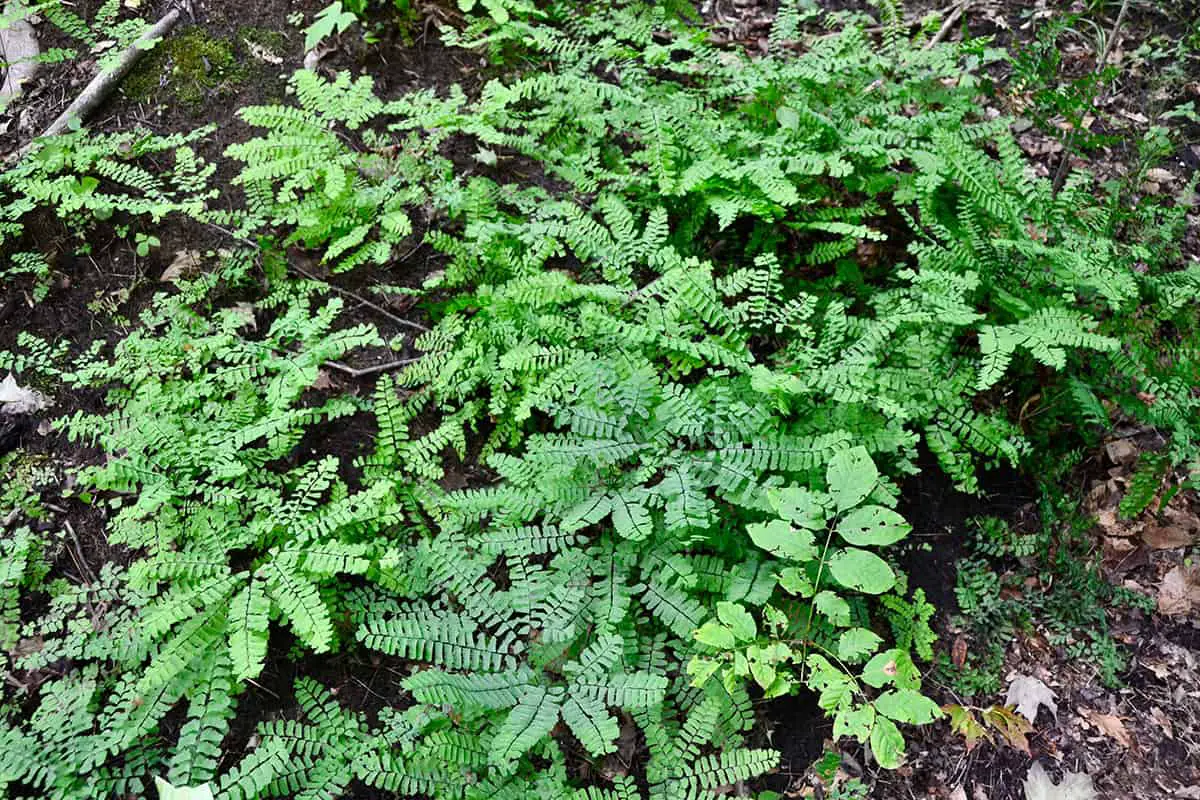
- Botanical name: Adiantum pedatum
- Common names: Northern Maidenhair Fern, American Maidenhair Fern
- Plant family: Pteridaceae
- USDA hardiness zone: 3 – 8
- Mature height: 3 feet
- Mature spread: 2 feet
This perennial fern is deciduous, with long arching fronds arranged with triangular leaves in a pinnate pattern on a black wiry stem.
The fiddleheads arrive in a warm shade of burgundy each spring and become bright green by summer. The plant is suitable for growing in zones 3 through 8, making zone 6 a perfect choice for this attractive fern.
Lady Fern
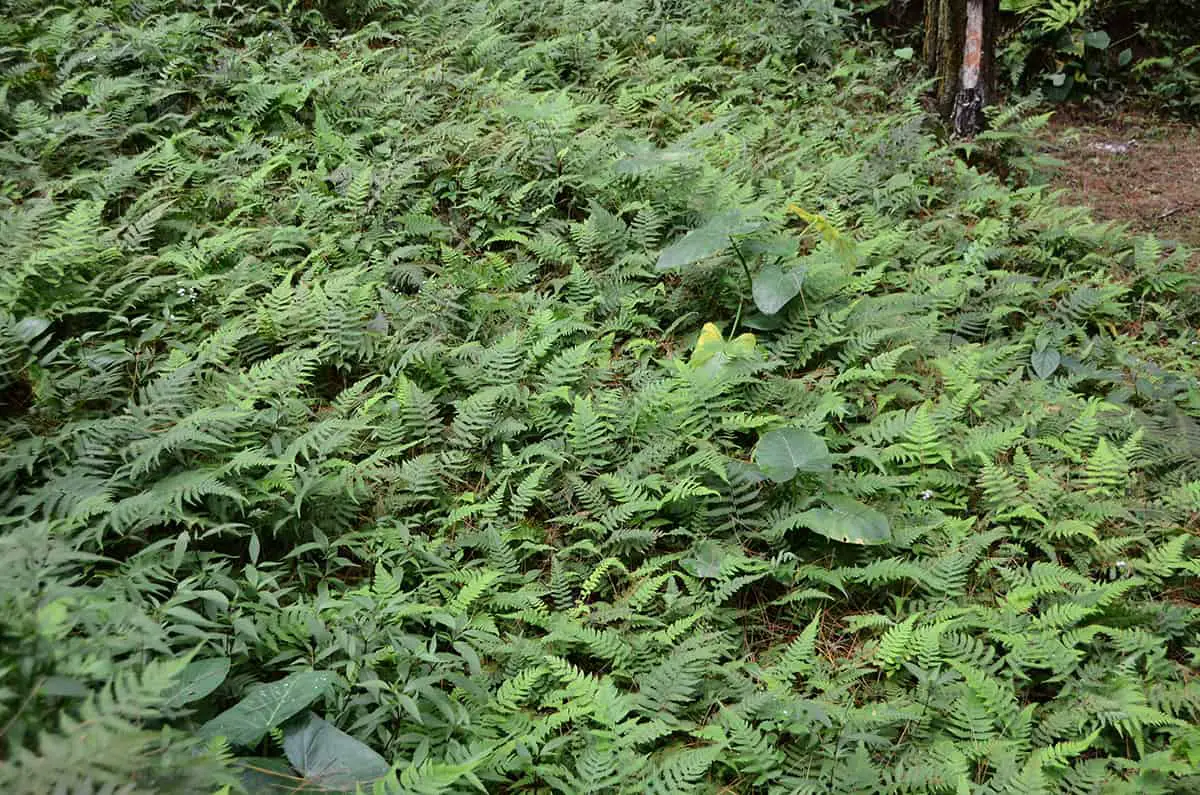
- Botanical name: Athyrium filix-femina
- Common names: Lady Fern, Female Polypody
- Plant family: Athyriaceae
- USDA hardiness zone: 4 – 9
- Mature height: 3 feet
- Mature spread: 3 feet
This stunning fern produces large, broadly triangular-shaped fronds. It is very low maintenance and has received the Award of Garden Merit from the Royal Horticultural Society. It forms clumps and can grow in spreading colonies, which makes it ideal for filling gaps in shady borders.
This fern is more tolerant of dry conditions than many other ferns, though you should still avoid letting the soil completely dry out. This fern will perform well in zones 4 to 6, making it well suited to life in a zone 6 garden.
Hart’s Tongue Fern
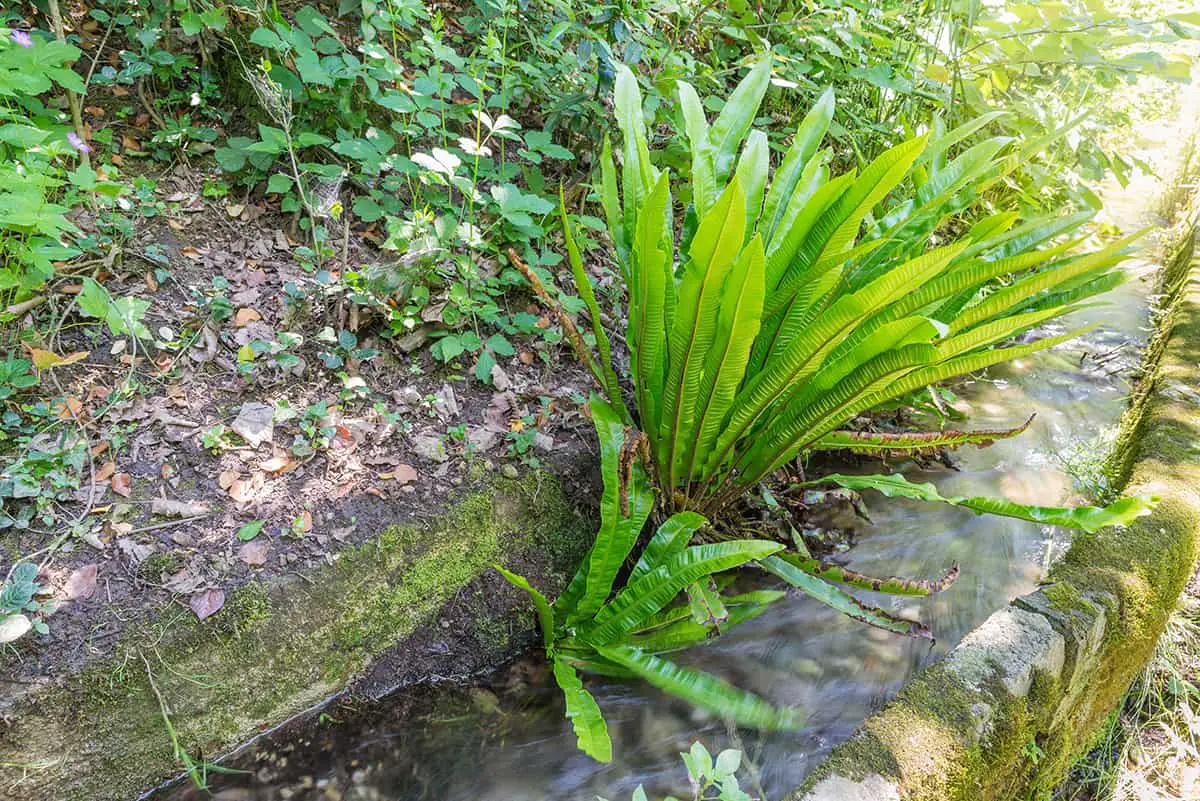
- Botanical name: Asplenium scolopendrium
- Common names: Hart’s Tongue Fern, Horse’s Tongue, Burnt Weed
- Plant family: Aspleniaceae
- USDA hardiness zone: 5 – 9
- Mature height: 2 feet
- Mature spread: 2 feet
This fern is native to Europe and the Eastern United States, though it has quite a tropical look about it. The wavy, ribbon-like leaves are bright green and arch outwards to form a rosette shape.
As an evergreen plant, this fern retains its vibrant color and holds interest throughout the year. This plant prefers partial or full shade and should be grown in well-draining soil which is kept evenly moist. It thrives in zones 5 to 9 and therefore will perform well in zone 6 settings.
Rattlesnake Fern
- Botanical name: Botrychium virginianum
- Common names: Rattlesnake Fern
- Plant family: Ophioglossaceae
- USDA hardiness zone: 4 – 9
- Mature height: 2 feet
- Mature spread: 10 inches
This deciduous fern is native to Asia, North America, and South America. It is one of the first ferns to emerge in the spring and the fronds survive through to the end of summer.
It is suitable for growing in zones 4 to 9 and will perform well in zone 6. Grow the Rattlesnake Fern in a partially shaded or fully shaded position, and maintain moist soil.
Male Fern
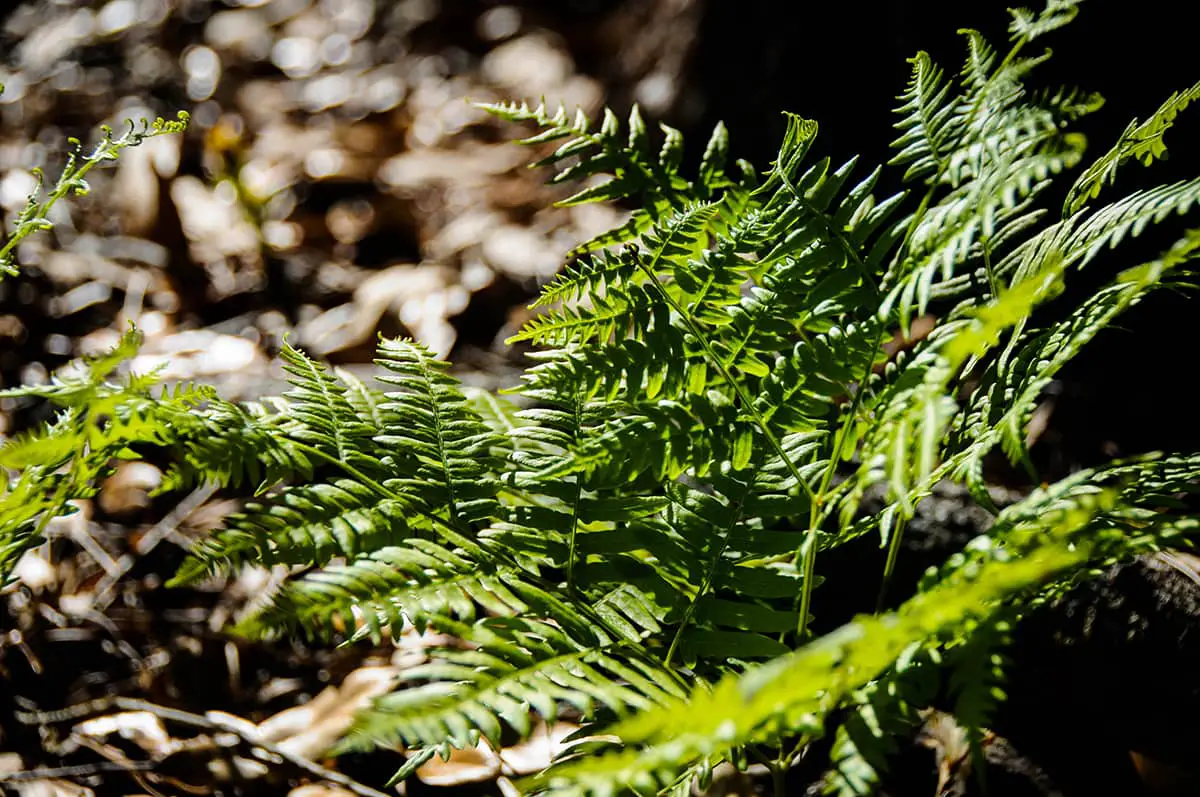
- Botanical name: Dryopteris filix-mas
- Common names: Male Fern, Basket Fern, Shield Fern
- Plant family: Dryopteridaceae
- USDA hardiness zone: 4 – 8
- Mature height: 4 feet
- Mature spread: 4 feet
This deciduous fern is native to North America and the United Kingdom. It produces dense clumps of muted green fronds measuring between 2 and 4 feet tall at maturity.
This is an exceptionally tough fern that thrives on neglect and performs best in full or partial shade and consistently moist soils.
Giant Wood Fern
- Botanical name: Dryopteris goldieana
- Common names: Giant Wood Fern, Goldie Fern, Goldie’s Wood Fern
- Plant family: Dryopteridaceae
- USDA hardiness zone: 3 – 8
- Mature height: 4 feet
- Mature spread: 6 feet
This is one of the largest ferns native to North America, growing to around 4 feet in height and 6 feet in width. It is cold-hardy down to zone 3 and will also perform well in milder climates up to zone 8.
The fronds of the Giant Wood Fern range in color from pale pastel green to blue-green. Grow this plant in partial or fully shaded conditions, and ensure the soil does not dry out.
Ostrich Fern
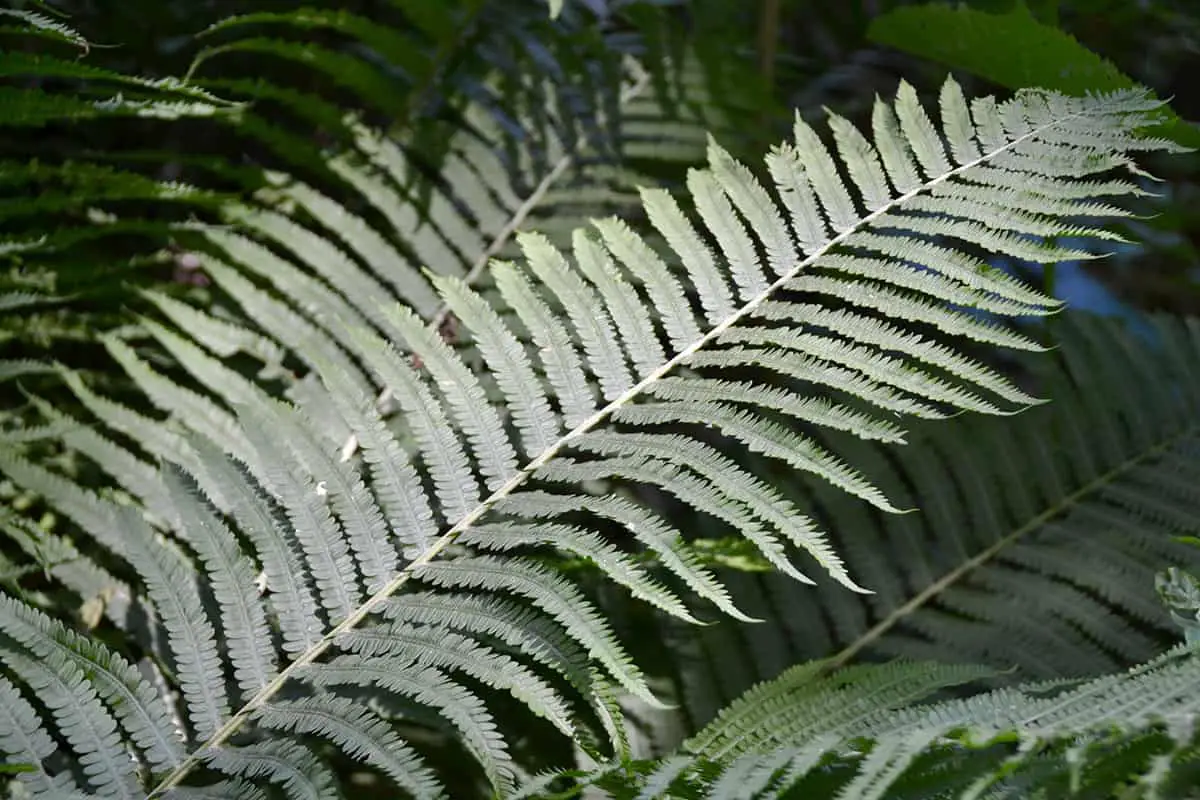
- Botanical name: Matteuccia struthiopteris
- Common names: Ostrich Fern, Shuttlecock Fern, Feather Fern
- Plant family: Onocleaceae
- USDA hardiness zone: 3 – 7
- Mature height: 6 feet
- Mature spread: 4 feet
This is a large, deciduous fern with enormous fronds which have a graceful arching habit. It is a North American native that will thrive in zones 3, 4, 5, 6, and 7.
The plant prefers to be grown in full or partial shade, and the soil should be rich and consistently moist. Though most ferns prefer moist soils, the Ostrich Fern can also tolerate wet and waterlogged soils.
Sensitive Fern
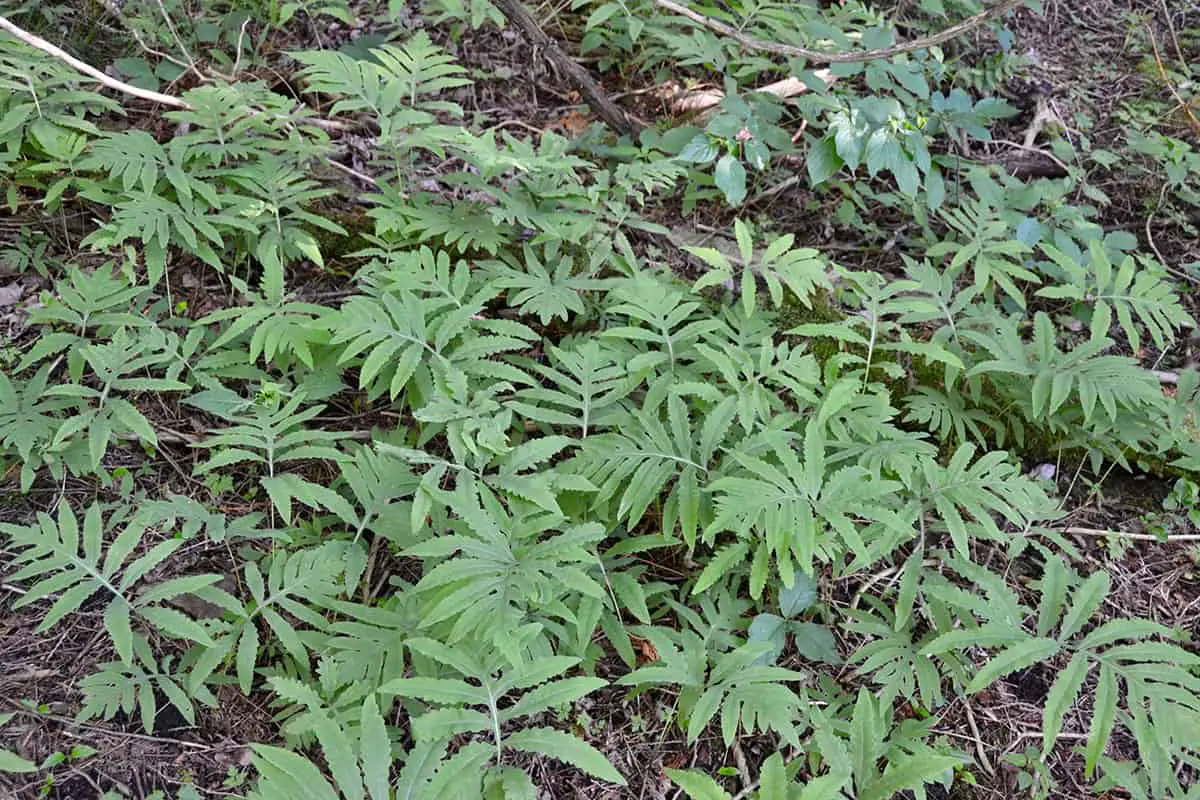
- Botanical name: Onoclea sensibilis
- Common names: Sympathy Fern, Sensitive Fern, Japanese Fern, Bead Fern
- Plant family: Onocleaceae
- USDA hardiness zone: 4 – 9
- Mature height: 4 feet
- Mature spread: 4 feet
This is a perennial, deciduous fern that is native to Asia and North America. It is commonly known as the Sensitive Fern because of its sensitivity to frost. The fronds on the fern will very quickly die back after being exposed to frost.
The texture of the fronds is quite coarse, with a leathery feel. The Sensitive Fern is suitable for growing in zones 4 to 9 and should be kept in full or partial shade and consistently moist, rich soil.
